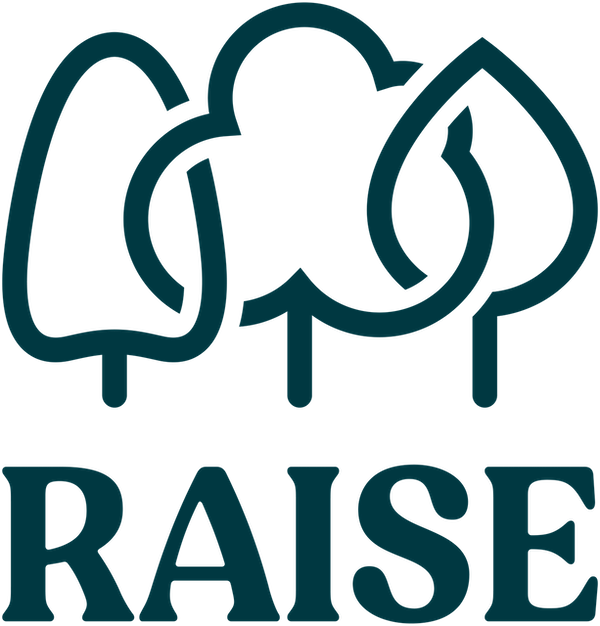Cummersdale

DATE:
2024 / 2025
LOCATION:
Cummersdale, near Carlisle
PARTNERS:
Cumerland Council, Natural England, Forestry Commission
Case studies >> Cummersdale
Creating new woodland with the community
Aims
Increased biodiversity through the creation of woodland with a diverse species mix.
Improved public access through path construction, adding gates, and removing fences.
Establishment of a ‘food forest’ for the local community to use and care for.
Contribution to the improvement of water quality in the River Caldew.
Cummersdale, a village on the outskirts of Carlisle, is a meeting point of fields, factories, and the River Caldew. This site is of vital importance to the local community as it connects the village to the river and is used regularly by walkers and those accessing other paths and rights of way networks from the village. The land is council-owned and was previously used for grazing by local tenant farmers, which leaves it as a blank canvas for woodland creation and a huge opportunity to improve access.
There is existing woodland on the site, which was planted some years ago, coinciding with the construction of a nearby factory. The site is also located close to an existing community woodland that has been in place for about 20 years, so the site was an opportunity for improved connectivity and to ‘join the dots’ of the existing habitat across the area.
In planning the project, a consultation process was carried out by the Raise Collective, a concept that pulls together perspectives not traditionally found in forestry settings. Engaging a wide range of stakeholders, including the parish council, local residents, schools, historians, artists, and practitioners, allows for a broad view of the project and informs the plans and decisions made about the site. This collaborative effort aims to ensure we are addressing the needs and aspirations of the community as thoroughly as possible.
From this process, it became clear that the viewpoint within the land is of historical significance, being referenced in both literature and artwork. This fed into the planting plan with the intention to preserve a wide gap down the centre of the field, maintaining its open and scenic quality.
Historically, access to this area was limited, with old troughs serving as makeshift stiles. However, plans are in place as part of this project to formalize the paths once the planting is completed, making the area more accessible. This includes replacing the stiles with gates and improving the surfaces to accommodate mobility scooters, enhancing accessibility for everyone in the community.
The planting includes wet areas identified near the river and in other areas of poor drainage, with species chosen to include birch, alder, willow, and hazel. The drier areas include oak, sycamore, chestnut, birch, walnut, and field maple. The planting density is high at 3,000 stems per hectare to mitigate deer pressure and losses, with 0.6 tubes for protection from small mammals. Trees were carefully selected to frame and enhance the view, in line with the feedback from the Raise Collective.
The food forest adds even more value to the site and includes a mix of fruit trees to create an area where the local community can come and use, care for, and collect produce. This addition gives another way to connect with the site and creates further interaction with the woodland beyond simply walking through it.
The community has been involved throughout the process, including visits from Tullie with a group of people seeking asylum who came to visit the site, and groups from Team Autism who helped in the planting phase. This came about through the consultation process and creating opportunities for groups facing different barriers to participation to come along to the site and get involved in ways that worked for them.
The planting days were organised over several days with the local community and were attended by the local school, residents, and Team Autism. These days provided an opportunity to learn more about the plans for the site and learn how to plant trees. Many of the volunteers had a relationship with the site already and were keen to get involved, make their mark on the project, and share their stories of how they use the area.
Future plans for the site include the improvement of paths and access to the area and using the site for further visits from Tullie and Team Autism.
132
Volunteers
8,612
Number of trees
3.77
Hectares of woodland planted
Project Impact
Contribution to Net Zero:
The 8,612 trees will sequester carbon in their structure and in the soils beneath.
Public Access and Community Engagement:
New gates, paths and trees will improve accessibility
Ongoing engagement events will foster community participation.
Innovation:
Development of a food forest for the community will give more ways to engage with the area.
Efforts to identify and address barriers to participation for specific groups through the Raise Collective.
Health and Wellbeing:
A healthier, more accessible space for the community has been created.
Volunteering and planting days provide physical and mental benefits from connection with nature.
Education and Skills:
Schools and local people have been involved in the planting and planning of the site, learning about tree planting and forestry.
Agroforestry:
The development of a food forest gives access to food from the woodland.
Nature and Biodiversity:
Linking up the existing woodlands will create corridors and more opportunities for nature.
Tree planting will reduce the runoff of soil and nutrients into the river.








